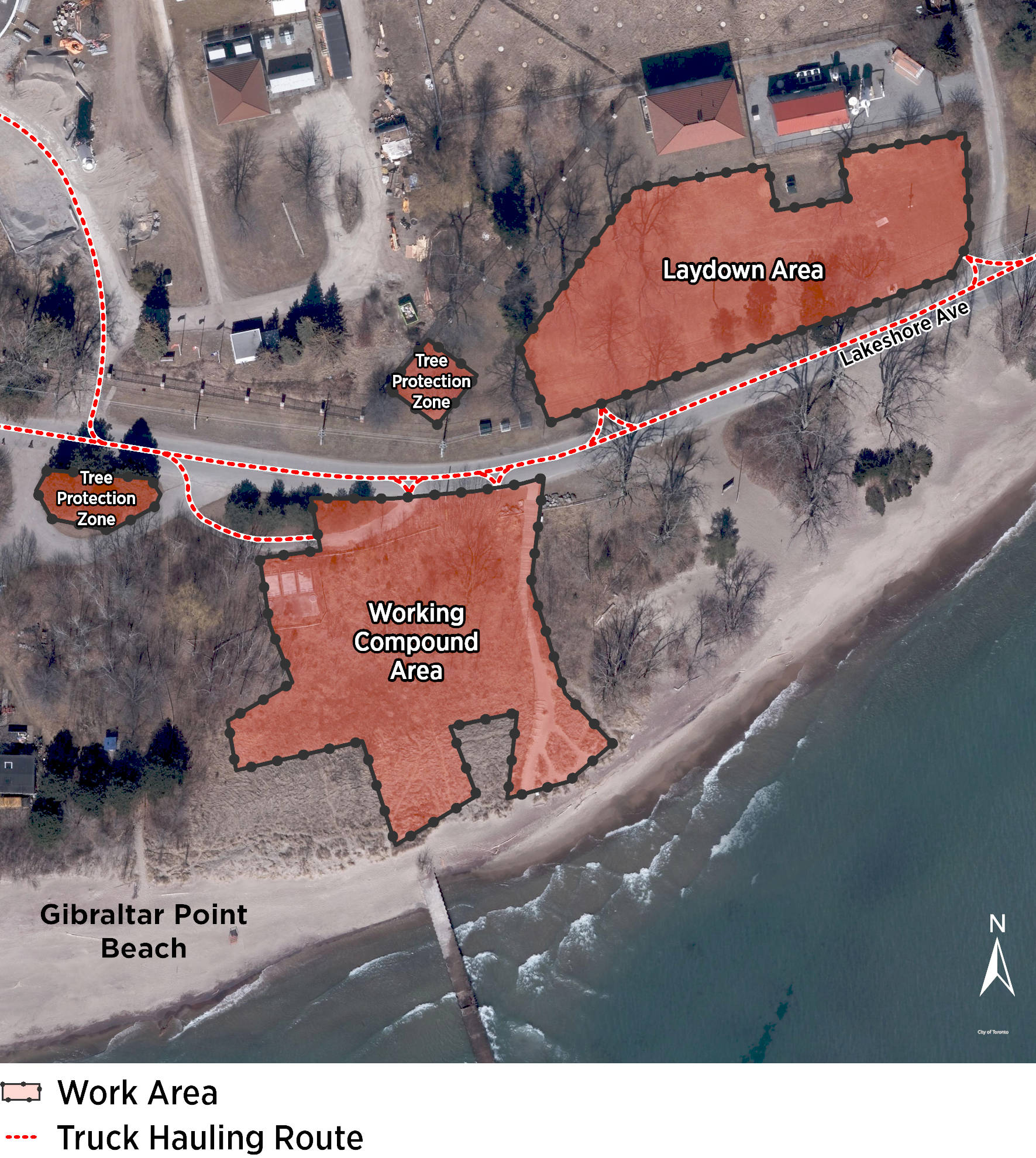
The City of Toronto and Enwave Energy Corporation, as co-proponents, have completed an assessment to examine expanding the existing Deep Lake Water Cooling (DLWC) supply. Enwave provides cooling to over 80 buildings in downtown Toronto through its District Energy System.
The City and Enwave operate under an existing Energy Transfer Agreement (ETA) that facilitates the transfer of cooling energy from the City’s drinking water infrastructure into Enwave’s District Energy Supply through heat exchangers.
There is continued growth in demand for cooling Toronto’s downtown core, and Enwave anticipates about 35 per cent increase in its customers’ cooling demands in the near future. There is an opportunity for the City and Enwave to amend the Energy Transfer Agreement and expand the DLWC system to meet the cooling demand in a mutually beneficial way.
Following consultation with the community and key stakeholders, the preferred solution is to expand the DLWC supply. The preferred solution includes the addition of up to two new intakes deep into Lake Ontario at the Island Water Treatment Plant (WTP). Raw water would bypass the WTP and be delivered to the ETS and then the Simcoe Street Cooling Plant to be used as cooling water for Enwave’s District Cooling Loop before being discharged back to the Toronto Harbour.
June 2021 Construction information
Notice of Study Completion 2020 September
While we aim to provide fully accessible content, there is no text alternative available for some of the content on this page. If you require alternative formats or need assistance understanding our maps, drawings, or any other content, please contact the staff on the side of this page.
The City’s Island Water Treatment Plant (Island WTP) draws cold water from three intake pipes that extend deep into Lake Ontario. Before entering the City’s distribution system, the treated water passes through Enwave’s Energy Transfer Station (ETS). There, heat exchangers transfer thermal energy from the district cooling water loop to the cold drinking water. The rechilled cooling water is circulated through a closed loop running throughout downtown to provide cooling to buildings, and then Enwave recycles the heat, returning the warm water to the ETS to repeat the process.
More details are available on Enwave’s website.
Recommended Solution
The recommended solution is shown in the Study Area Map, and includes the following:
– Construction of a fourth intake now and a fifth intake in the future. The new intake pipes would be inter-connected with the three existing deep lake intake pipes at the Island Water Treatment Plant (WTP).
– Raw water from the new intakes would supply the existing Island WTP and would also bypass the Island WTP and be delivered directly to Enwave’s Energy Transfer Station (ETS) through the construction of a new raw water tunnel – separate from the City’s drinking water.
– the cold raw water would pass through new heat exchangers at the ETS and Enwave’s Simcoe Street Cooling Plant before being discharged back into Lake Ontario via modifications to the existing connection to the City’s existing stormwater system.
Construction of the expanded Deep Lake Water Cooling (DLWC) system will run from April 2021 to spring 2024.
Temporary construction areas will be located north and south of Lakeshore Ave near Gibralter Point Beach. There will be some increased vehicular traffic on Lakeshore Ave near the construction area. However, construction vehicles will be escorted at all times and the road will remain open for pedestrians, cyclists and vehicles. The safety of Toronto Islands Park users is a priority.
Most of Gibraltar Point Beach will remain open during construction with a small portion closed. All other areas around Toronto Island Park will remain open. We hope you will continue to enjoy Toronto Island Park during this project.
All construction areas will be restored upon completion including all park amenities and naturalized areas.
The pipeline will pass through a number of City-owned parks, including HTO Park, Southern Linear Park, the future Rees Street Park at 318 Queens Quay and parts of the Toronto Island Park. The majority of the pipeline will not be visible at ground level. Shafts of the pipe will be above ground permanently and visible at two locations: the John Street Pumping Station and south of the Toronto Island Water Treatment Plant near Gibraltar Point Beach.
